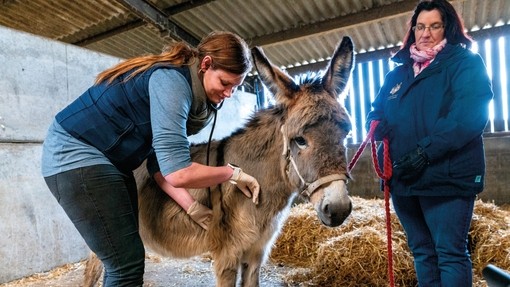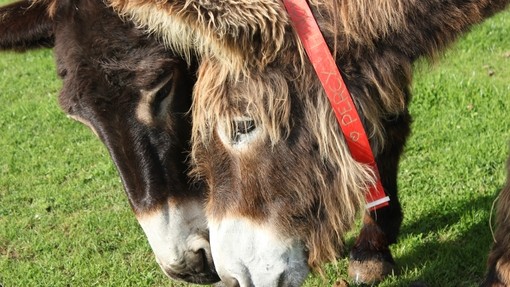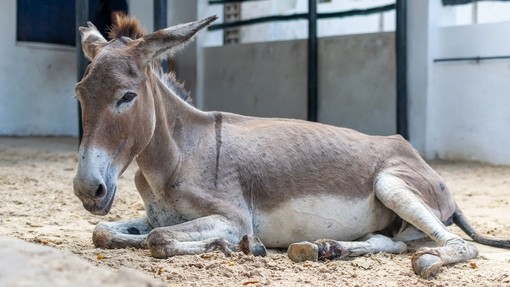Donkey first aid kit
Keep a simple first aid kit in a clean, sealed container, somewhere accessible. This will allow you to treat wounds quickly and efficiently. Replace used items as soon as possible.
Your donkey first aid should include:
- thermometer
- gauze swabs
- cotton wool
- poultice material
- antiseptic solution suitable for equine use (chlorhexidine or similar)
- round-ended scissors
- cohesive bandage
- disposable gloves
- vet, farrier, and equine dental technician contact numbers
- date of your donkey’s last tetanus injection.
What should I do first if my donkey has a wound?
If you find your donkey with a wound, the first step is to prevent further injury. Catch your donkey and keep them as calm and still as possible. If your donkey is frightened, make sure you are safe when handling them.
Always take care when examining wounds, especially those on the limbs. Some wounds can bleed a lot.
If the wound is on the lower leg, apply gauze swabs to the wound and bandage with firm pressure before calling your vet. A pressure bandage will help stem the flow of blood.
When should I call my vet?
Speak to your vet if your donkey has:
- continuous or excessive bleeding (haemorrhage)
- a puncture wound or penetrating wound the entire thickness of the skin
- a wound close to a joint
- a severe wound at knee/elbow level or below. Wounds of the lower leg can be serious even if they don’t look very deep
- wound contamination (such as from dirt or other material)
- a wound that you think is infected. Skin around infected wounds may be swollen, hot and painful to touch. There may be an unpleasant smell or yellow pus coming from the wound
- bruises, lumps, swelling, and inflammation without an obvious wound, which may be the result of an underlying problem
- any other type of serious wound
- an out of date tetanus vaccination, they need a tetanus antitoxin injection and booster vaccination. See our factsheet on vaccinating your donkey for more information.
How do I treat minor wounds?
- Bathe or hose the wound with cold, clean water to remove dirt and allow you to see the wound clearly. The cold water will help reduce swelling.
- Clean the wound fully using a gauze swab and antiseptic solution. Dilute the wound solution according to packet instructions.
- Trim the hair around the wound to help keep the wound clean.
- Do not use sprays or powders unless specifically instructed by your vet.
- If your vet recommends you bandage the wound, the bandage should be monitored daily and changed regularly. When changing the bandage, check the wound for signs of infection (unpleasant smell or discharge) and to see it is healing. The bandage should not cause sores. If worried, speak to your vet. Remember, a badly bandaged leg will cause more harm than good. Seek expert advice if needed.
- Healing wounds may cause irritation to your donkey. Speak to your vet if your donkey shows signs of self-trauma (such as biting or rubbing at the wound site).
A badly bandaged leg will cause more harm than good. Seek expert advice.
How do I treat serious wounds?
- Get help from a vet as soon as possible. Your vet can give you advice while you wait for them to arrive, depending on the wound.
- Keep your donkey as calm and still as possible. This may be easiest inside a stable. Take care not to get injured.
- If the wound is bleeding, apply pressure directly to the wound using gauze swabs or bandage the wound with a suitable dressing.
- If blood seeps through the swabs, apply a second layer on top, without removing the first dressing.




